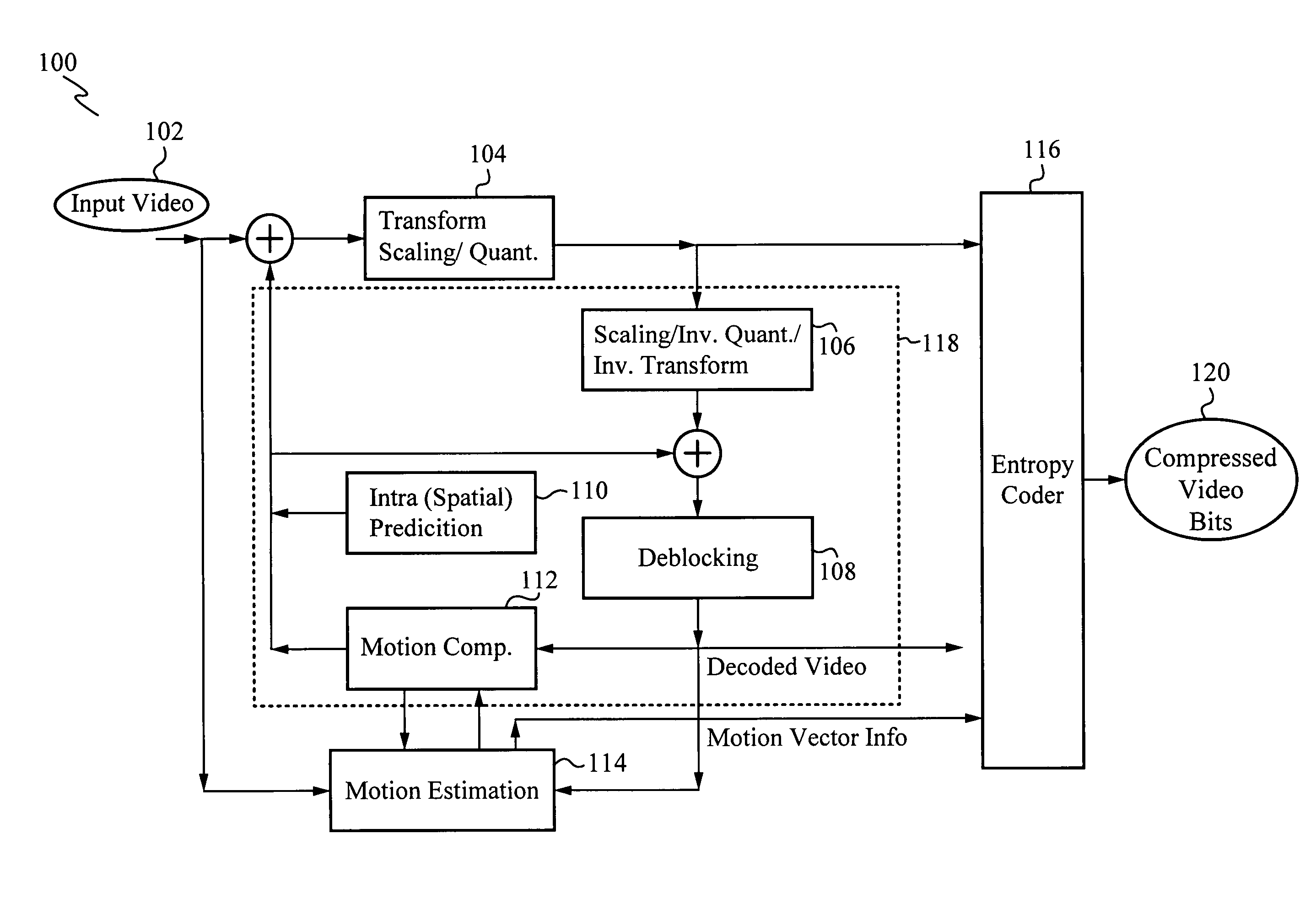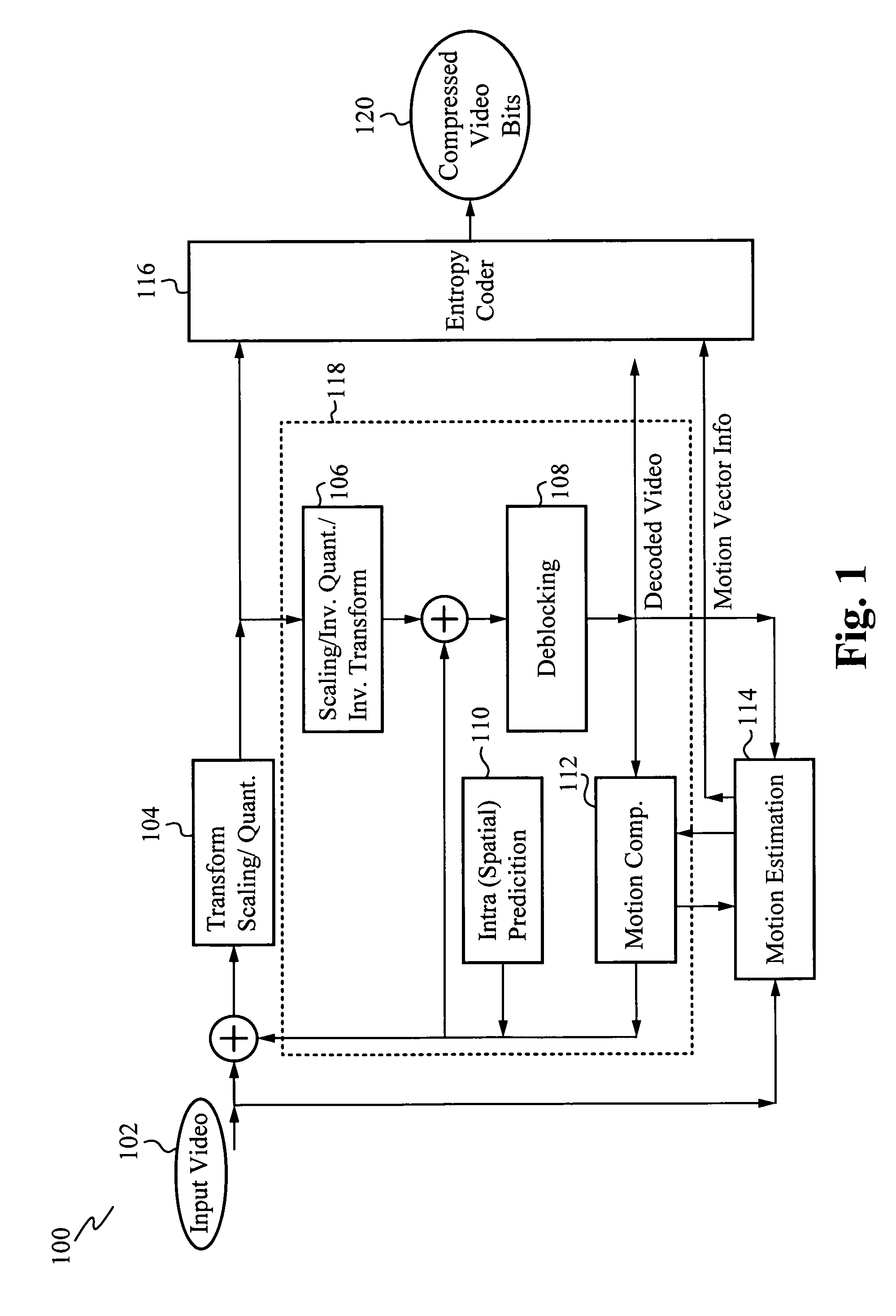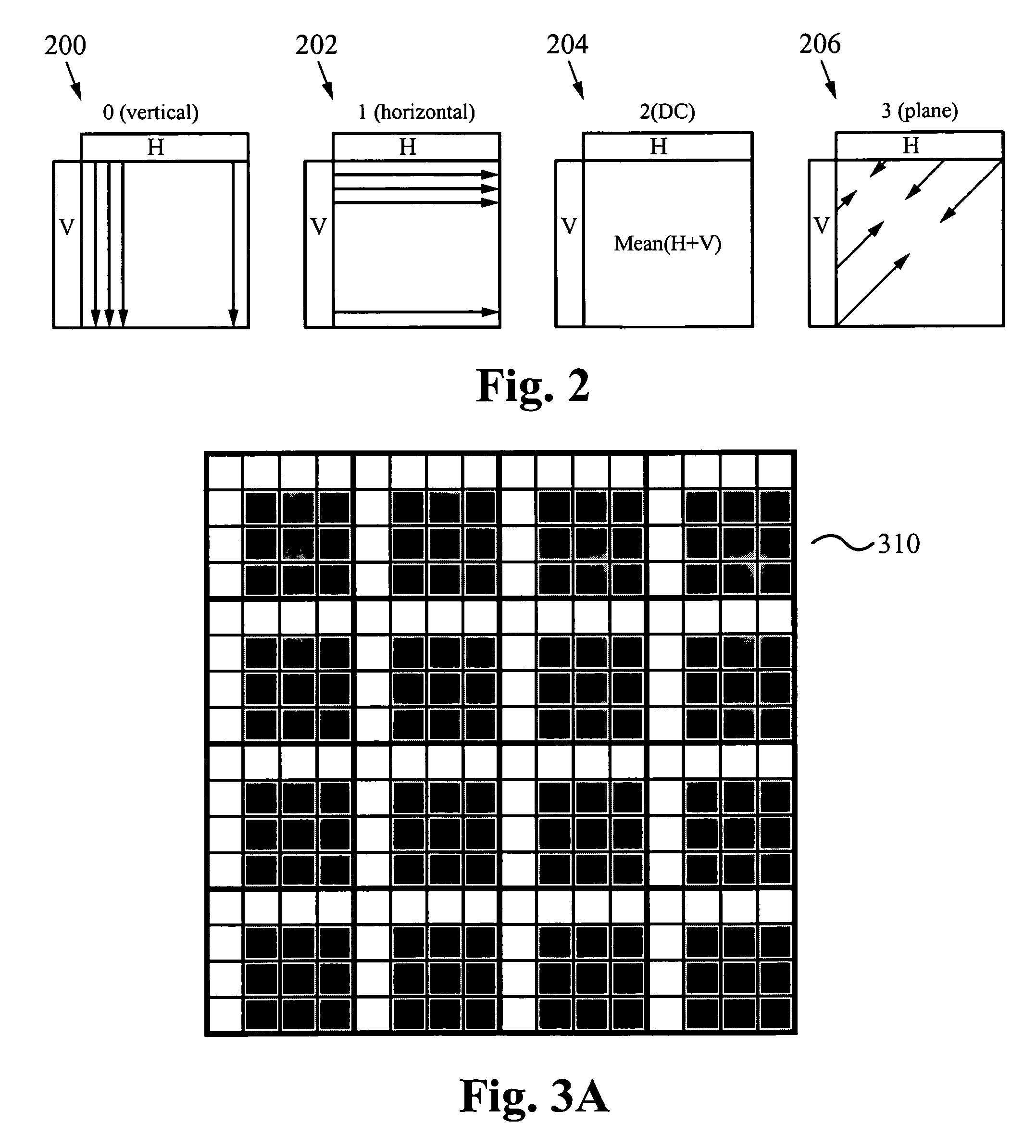Method of reducing computations in intra-prediction and mode decision processes in a digital video encoder
a technology of digital video and decision process, applied in the field of video compression, can solve the problems of large increase in complexity, impractical design implementation, and difficulty in encoding time, and achieve the effect of improving the computation speed of the sum of absolute transformed distances (satd), reducing intra-prediction and mode decision processes, and improving coding performan
- Summary
- Abstract
- Description
- Claims
- Application Information
AI Technical Summary
Benefits of technology
Problems solved by technology
Method used
Image
Examples
Embodiment Construction
[0039]FIG. 1 shows a block diagram of the video coding layer 100 of a macroblock. The video coding layer 100 (e.g. the encoder) includes a combination of temporal and spatial predictions along with transform coding. An input video 102 is received and split into a plurality of blocks. The first picture of a sequence is usually “intra” coded using only information contained within itself. Each part of a block in an intra frame is then predicted at the intra prediction module 110 using spatially neighboring samples of previously coded blocks. The encoding process chooses which neighboring samples are utilized for intra prediction and how they are used. This process is conducted at the decoder 118 as well as at the encoder 100. For the rest of the pictures of a sequence, usually “inter” coding is used. Inter coding implements motion compensation 112 from other previously decoded pictures. The encoding process for inter prediction / motion estimation 114 includes choosing motion data, dete...
PUM
 Login to View More
Login to View More Abstract
Description
Claims
Application Information
 Login to View More
Login to View More - R&D
- Intellectual Property
- Life Sciences
- Materials
- Tech Scout
- Unparalleled Data Quality
- Higher Quality Content
- 60% Fewer Hallucinations
Browse by: Latest US Patents, China's latest patents, Technical Efficacy Thesaurus, Application Domain, Technology Topic, Popular Technical Reports.
© 2025 PatSnap. All rights reserved.Legal|Privacy policy|Modern Slavery Act Transparency Statement|Sitemap|About US| Contact US: help@patsnap.com



